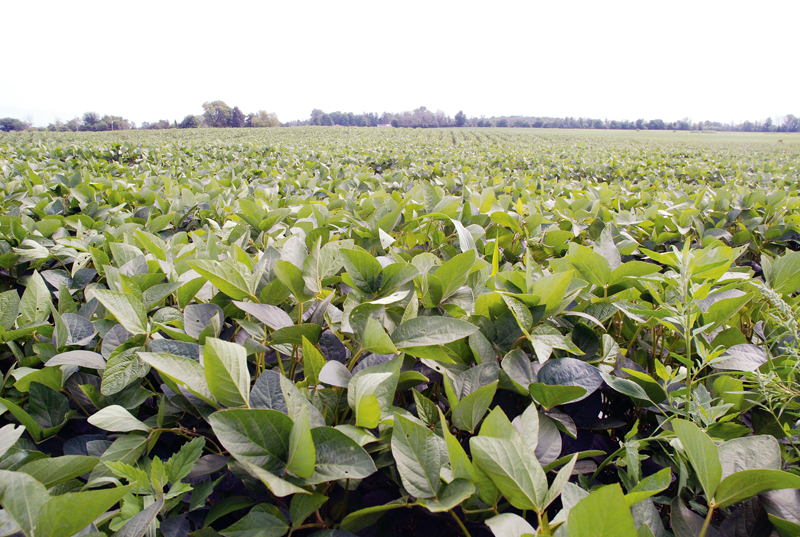Soybeans
The dry weather has done little to effect soybean crops. Morin photo
by Scott Banks
Independent Agronomist eastcropper@gmail.com
The weather is very dry and covers a lot of the region with most areas receiving only 3-5 mm in the past two weeks. Areas east and north of the 417 have faired somewhat better with about 25-30 mm. The very hot, 30 plus temperatures have further stressed the lack of moisture on all crops, particularly the cereals and grass forages’ stands.

The weather has had an impact on cereals this year. Low yields but good quality describes many of this summer’s crops.
Bouwers photo
Forages
Most of the dairy second cut hay has been cut. Although good quality, there is low yields due to the excessive heat and lack of moisture. Potato leaf hoppers have thrived under these conditions and are particularly damaging to the new alfalfa seedling stands. The third cut regrowth is looking promising in those areas that received at least some rain in the past two weeks. Generally, the grass hay and pasture fields are desperate for rain and are brown with none to very little regrowth at this point.
Cereals
Only a few growers have started winter wheat harvest. Although most fields look good from the road, the yields reported thus far have been only 50 to 75 bushels per acre and harvest moistures in the 18-20 per cent range. Quality of the wheat samples look good. Spring cereals are well into grain fill now. The straw height is shorter than normal due to the dry, hot weather. The early planted spring cereals will likely be ready to harvest a week or two earlier than normal in the first week of August.
Soybeans
Overall, soybean cropslook to be fairing the best under the dry conditions. The small amounts of rain have perked up the soybeans. The plants are flowering well and some have set 3-bean pods on the bottom flowers which looks promising. Spider mites thrive under dry hot weather, so growers should scout fields for spider mite feeding damage on the soybean or edible bean leaves. Feeding damage is usually first seen on the edge of the field along the grassed areas, but pockets of damage can occur within the field also. The threshold to warrant control is 4 mites per leaflet or 1 severely infested plant. Rain will promote a fungus that will help control spider mites. Note, spider mites are not the same as soybean aphids. Dimethoate (Cygon/Lagon) is the only product registered for spider mites on soybeans and edible beans.

Corn crops are feeling the stress of a dry summer.
Morin photo
Corn
Most areas are still under a lot of stress with the ‘onion’ curled up leaves in a lot of fields. There has been some reports of heavy flea beetle pressure on corn leaves. Corn flea beetles are small (2 mm), shiny black beetles that move very quickly when disturbed. Corn flea beetles are the primary vector of the bacterial disease, Stewart’s wilt. Adult beetles strip away the leaf tissue causing a ‘window-paning’ appearance. This feeding is usually superficial and does not warrant control. Most corn hybrids have good genetic tolerance to Stewart’s wilt. This is a critical stage for corn as the amount of moisture will impact on pollination, and ultimately on the final yield. Most stands have started to tassel out. Uneven tasseling shows the variability in maturity of the plants in the stands, whether from tillage, planter, compaction, drainage problems or just variable in-field soil types. Noting these areas now can help identify the problem areas to correct for future crops.













